Mind The Germs: Mapping Bacteria in the London Underground

Around 1.35 billion passengers ride the Tube every year. Just picture all those hands touching escalator handrails, ticket machines, barriers, seats, and poles – it’s a recipe for a germ stew on a normal day, let alone with the current coronavirus outbreak.
So what can you do to get to work and avoid getting infected?
Tube travellers frequently complain about fellow passengers who cough and sneeze indiscriminately in such close quarters. And given that we know many people fail to wash their hands after using the toilet, it seems only natural that these surfaces are laden with bacteria after contact with millions of hands.
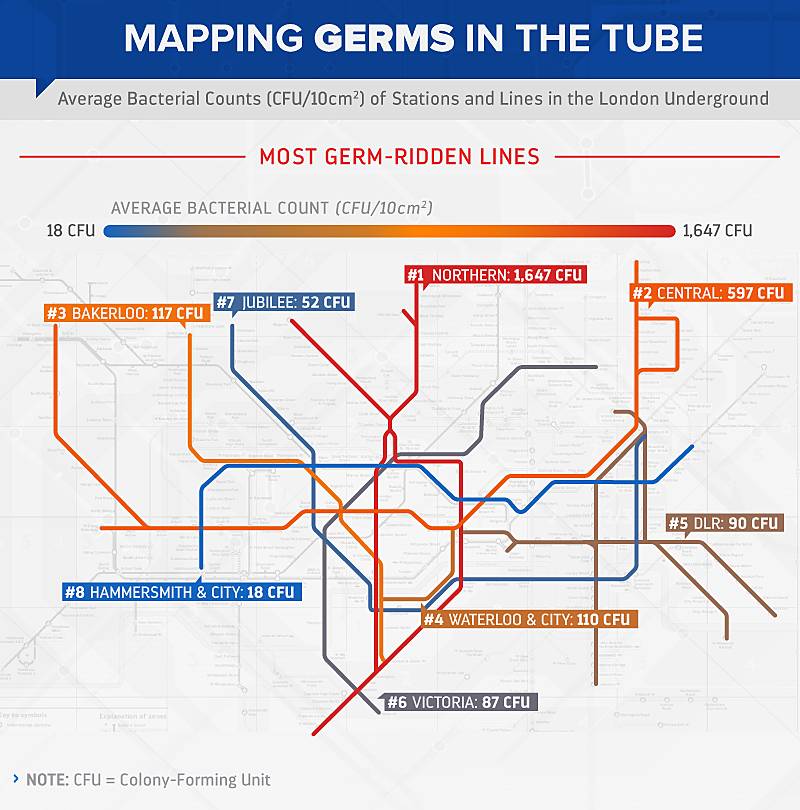
Where do germs lurk?
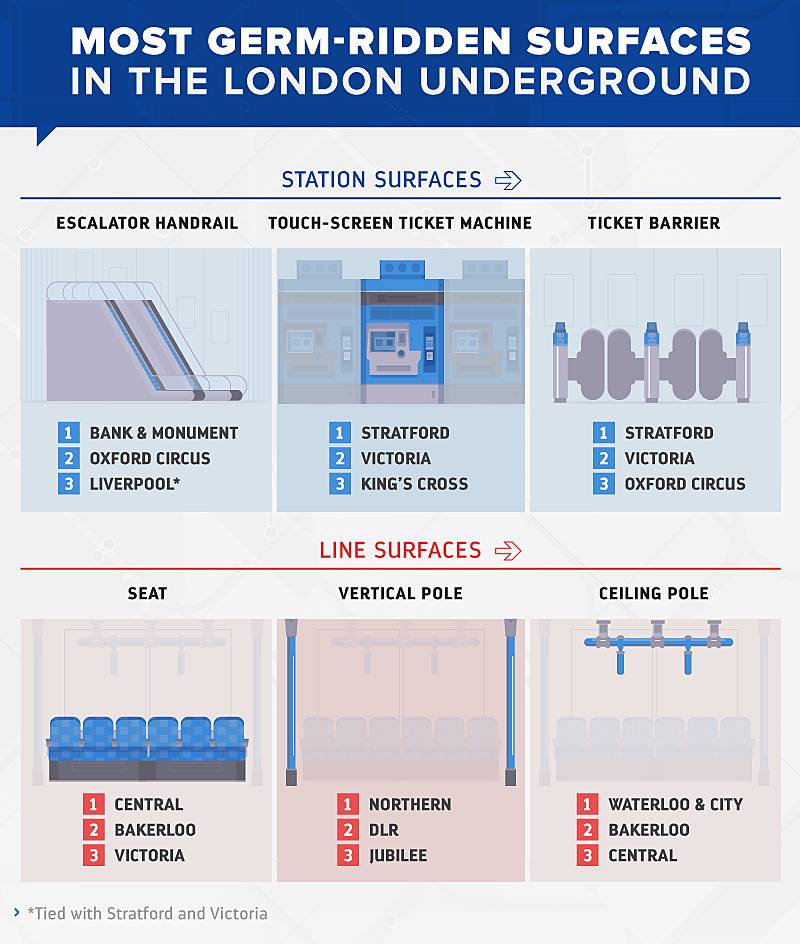
You'll find germs all over the place when you ride the Tube. They're on:
- money
- escalator handrails
- touchscreen ticket machines
- ticket barriers
- seats
- vertical poles
- ceiling poles
A recent study looked at all available data on past coronaviruses such as SARS and MERs, and analysed the survival of these viruses on inanimate surfaces such as handrails, monitors, glass, plastic and metal.
They found that the virus can stay on these surfaces for up to 9 days but can be inactivated by disinfection of each surface.
The best disinfectants were found to be those that contained 62 to 71% ethanol, 0.5% hydrogen peroxide or 0.1% sodium hypochlorite. They noted the virus was inactivated within 1 minute when these were used.
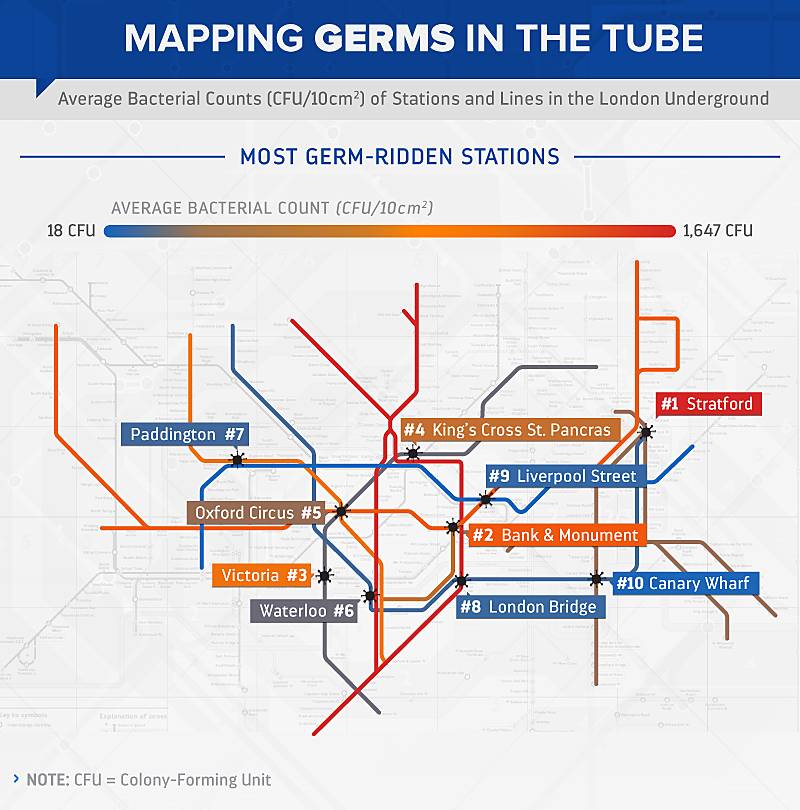
Money
A study done in 2008 looked at how long viruses survived on bank notes after they came in contact with the flu virus.
Although not the same virus, and little is known about it, coronavirus may follow the same trends.
The virus was found to survive for up to 3 days when it was introduced in high concentrations but when added to respiratory mucus showed a striking increase in survival time to 17 days.
A similar test was done with the Hong Kong/335/2001 virus which was found to be infectious after 1 day when it was mixed with respiratory mucus.
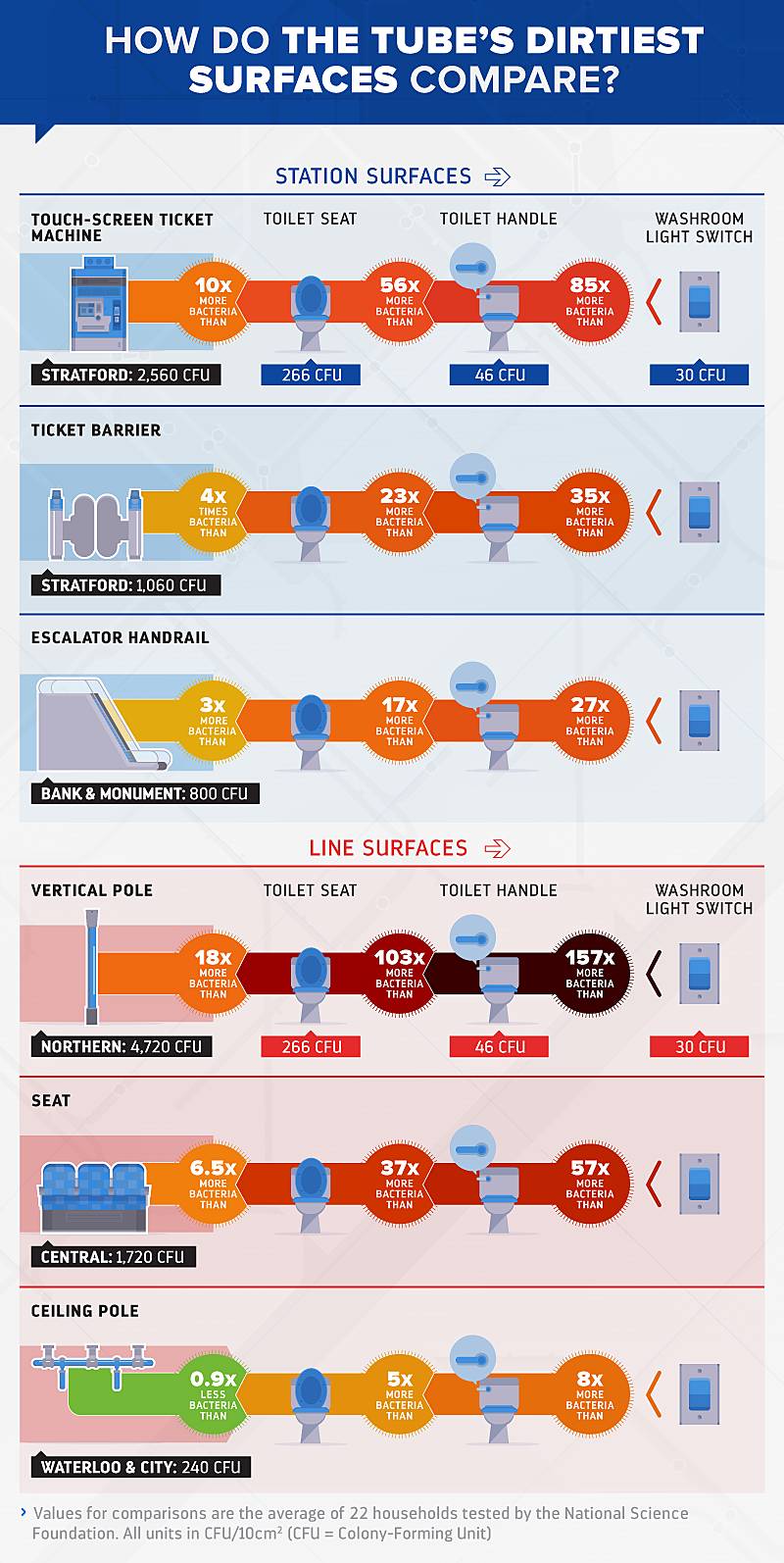
Handrails
It’s second nature to steady yourself with the handrail while riding an escalator - and it’s something that the Tube recommends for your safety to prevent dangerous slips and falls. Yet even lightly trailing your hand along the rail at one station could mean coming in contact with a surprising quantity of bacteria and viruses.
One study of escalator handrails at American malls revealed truly terrifying results: the surfaces contained urine, mucus, faecal matter, and even blood.
Researchers noted the handrails also hosted respiratory flora, which can cause viruses such as cold and flu because people tend to cover their mouths when they cough.

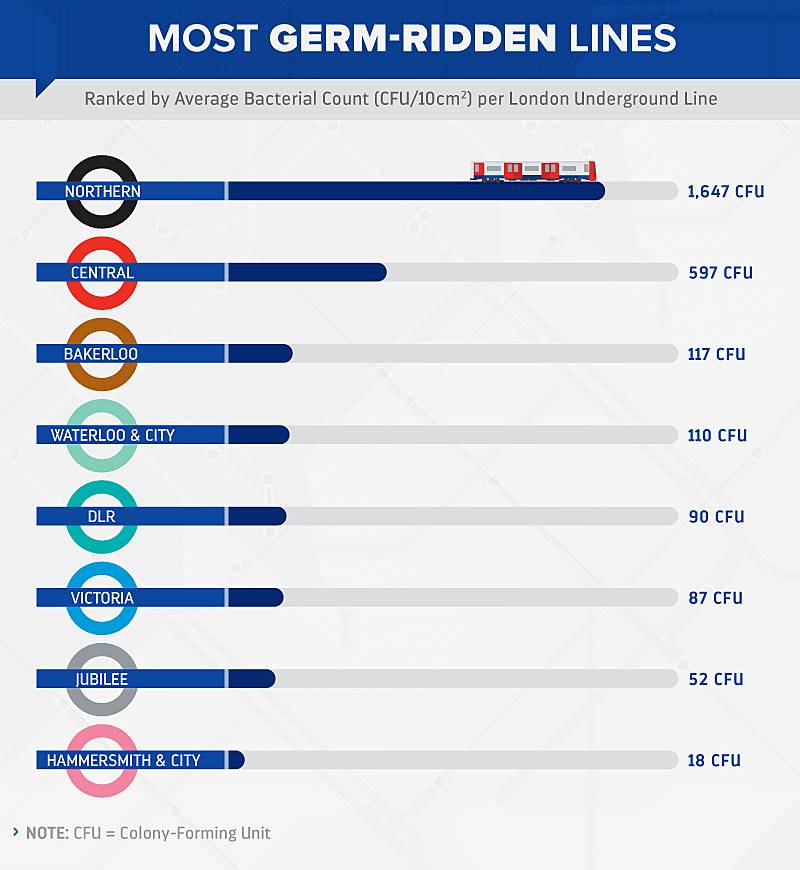
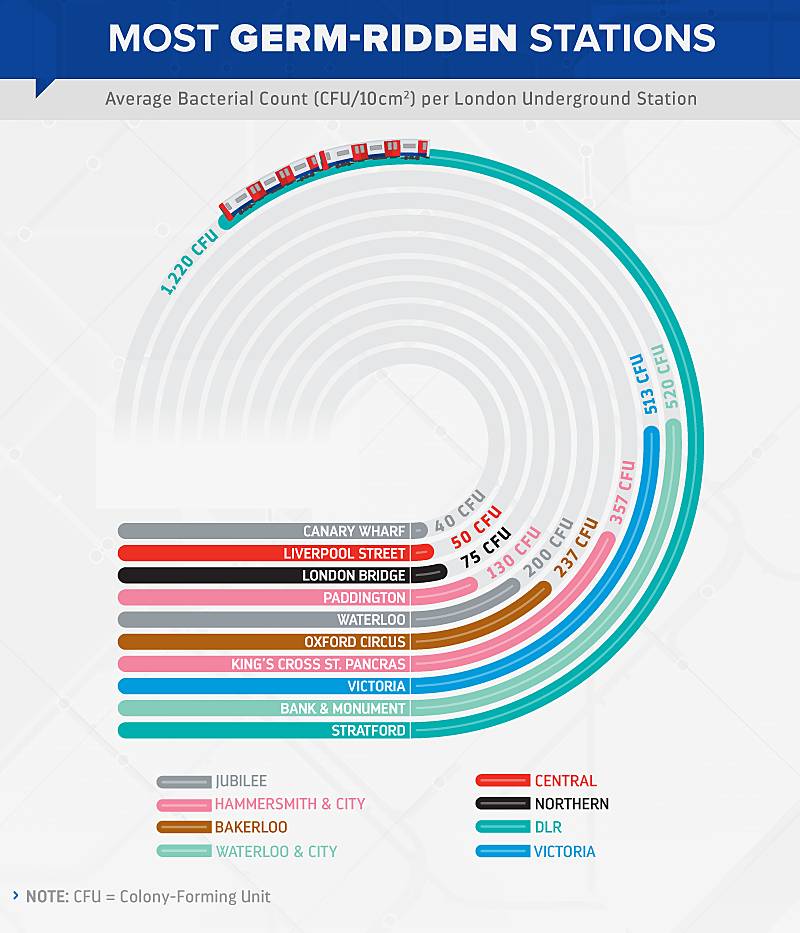
Touchscreens
Touchscreens are notorious for harbouring germs. Even worse, these screens allow for easier transfer of bacteria and viruses compared with other surfaces, according to researchers from the London School of Hygiene & Tropical Medicine and Queen Mary, University of London.
And once germs hit people’s fingertips, researchers say, it’s a relatively short trip to their eyes, nose, and mouth – after all, consider how many people chew their fingernails out of habit.
Wearing gloves could help when using these machines, alternatively carry a hand sanitiser with an alcohol base and ensure you wash your hands for at least 2 verses of happy birthday with warm to hot water and soap.
If you ride the Tube frequently, you’ve probably already mastered the etiquette involved: remove enormous rucksacks, don’t hog the poles, and give up your seat to mothers with babies, women who are expecting, and elderly passengers.
But avoiding poles and seats may become a priority rather than a polite obligation.
Although these may help, early containment and prevention of further spread is crucial to stop the ongoing outbreak and to control its spread.
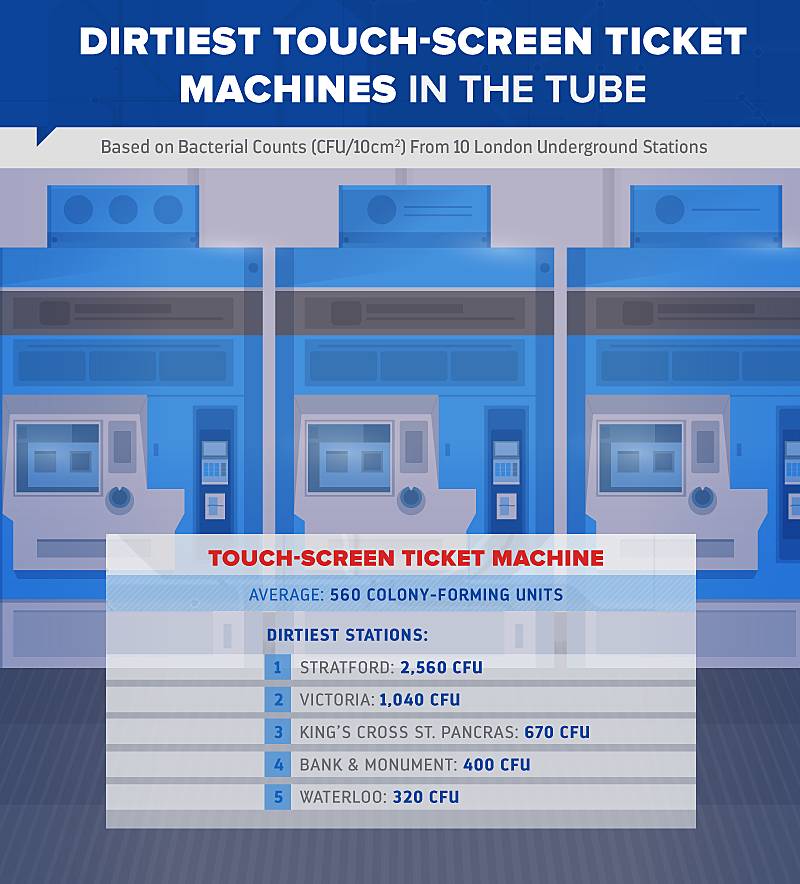

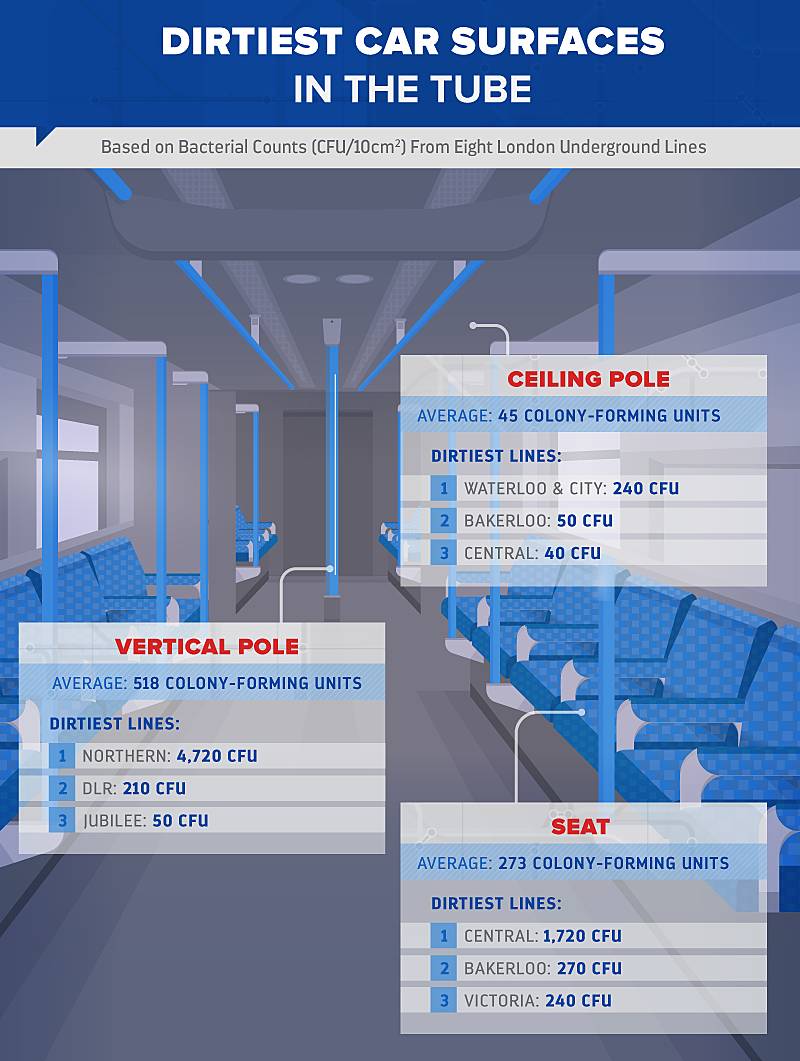
Staying healthy amid the germs
Although they’re not visible to the naked eye, thousands of bacteria and viruses are along for the ride on the Tube, and with the new coronavirus outbreak it’s a hotbed for transmission.
While scientific findings on health risks from public transportation aren’t conclusive, with all these germs around, if you’re not careful, you could be at risk of catching anything from a cough to coronavirus.
The NHS recommends making hygiene a daily practice both at home and when out and about, as many bacteria and viruses can survive on surfaces for several hours to days.
The most important step any traveller can take is frequently handwashing with soap and warm water. This is the most effective way to curtail the spread of infections.
Carrying some alcohol hand sanitiser to use after your journey can also help prevent the spread of some infections.
During your Tube journey, try to avoid absentmindedly touching your hands to your face, cover your mouth and nose with a tissue if you cough or sneeze, save your snacks and meals for after the journey, and wash up as soon as possible once you arrive at your final destination.
According to NHS Choices, you can help curtail the spread of illness through other simple steps, including avoiding unnecessary contact (including Tube travel) if you’re ill, and getting an annual flu jab if you’re at risk.
You can also reduce the spread of germs at home by removing your shoes before you enter and cleaning clothing and handbags that may have picked up bacteria or viruses.
At ZAVA, we care about your health, and our comprehensive doctor service offers a range of health solutions.
Perhaps you need treatment for a chronic condition like high blood pressure. Maybe you want to improve your overall wellbeing through stopping smoking. Or you might wish to ensure you stay healthy on an upcoming trip by securing treatment for traveller’s diarrhoea or tablets to prevent malaria.
Whatever your needs, you do not need to leave your house to get treated or speak to a doctor. Your treatment is delivered quickly and discreetly and without the need to use the Tube. Visit ZAVA for more details.
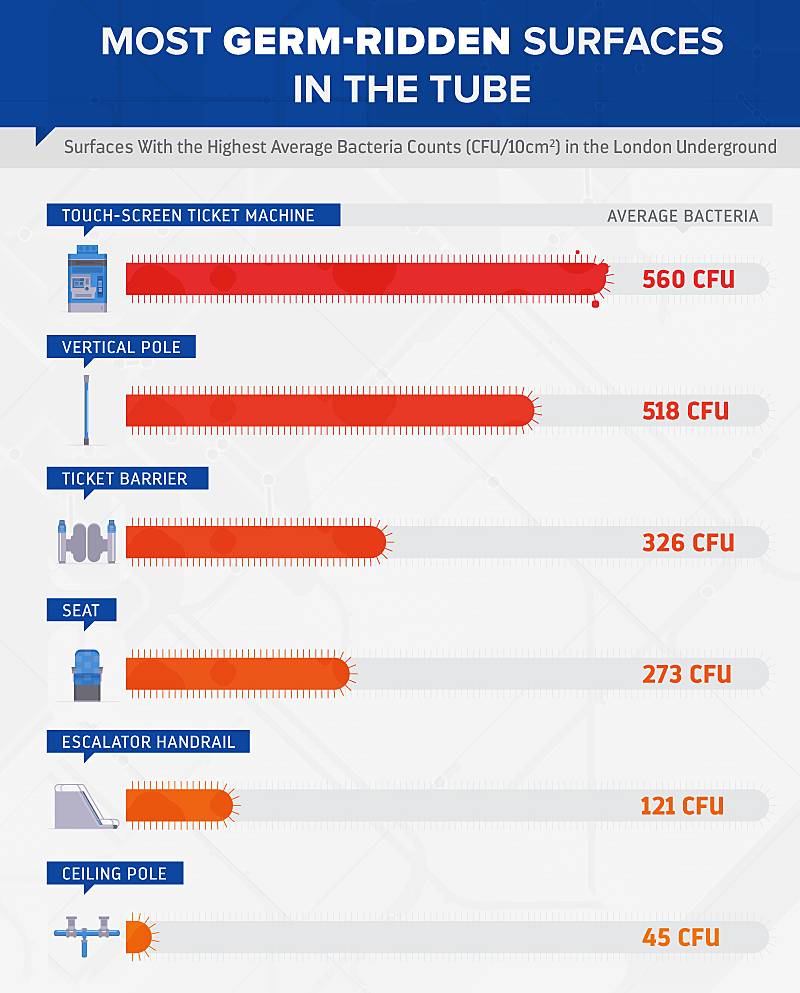
Methodology
Envirocheck (U.K.) Limited provided analysis for 60 bacteria swabs. We chose the 10 busiest stations in the London Underground based on the TFL’s 2016 annual entry and exit figures. Our team’s ride to the 10 different stations took them on eight different lines. The bacterial numbers presented are the total viable count (TVC) measured in CFU/10cm2 for 48 hours at 30ºC. No coliforms or E. coli were detected.
Fair use statement
The graphic materials found on this page may be shared or republished. To use this content, please provide attribution via a link to this landing page.
Explore ZAVA services
| Service | Treatment | |
|---|---|---|
| Men's health | ||
| Women's Health | Microgynon, Cerelle pill, Cerazette, Yasmin pill, Lucette, Rigevidon, Cilique, Evra patch |
|
| General Health | ||
| Sexual Health | ||
Genital Chlamydia and Gonorrhoea Test, Oral Chlamydia and Gonorrhoea Test, Extended STI Test, Chlamydia Test, HIV Test, HPV Test |
||
| Chronic Health | ||
Atorvastatin, Simvastatin, Rosuvastatin, Cholesterol Test Kit |
||
| Travel Health | ||